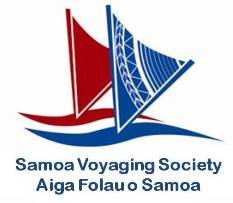Our first days in sighting the Galapagos captivated us. Literally. The first island we encountered did not seem to want to let us go. For over 2 days, winds and currents around the Island of Marchena toyed with us edging us close to its dark rocky lava field-filled shores. Over these 2 days the power supply from our solar panels were running dangerously low. At times we were going backwards in the 2 knot currents. Before times could get dire - and so that we were not late in getting to the main port of Puerto Ayora on Santa Cruz Island - we were forced to get a tow from our support vessel the Evohe. The Evohe came late one afternoon and towed us as well as the Maori Vaka, Te Matau A Maui, which was also in the same predicament as us, to Santa Cruz. Better to be towed than spend the next couple of days battling to get loose of the grip of Marchena island. After a 10 hour tow, and a hilarious ceremonial equator line stop for a quick baptism, we arrived with the others into Santa Cruz Island. The port town was about to be invaded by 96 pacific voyagers.
Santa Cruz Island was lush. It was volcanic, it was classic Galapagos. The harbour itself was framed by its highland volcano with a large collection of yachties scattered in the bay, serviced by an efficient system of cheap water taxis. This helped us immensely during our time here as there is no dock or marina. Re-provisioning of our fleet would be made a little easier in this manner.
The islands are the strangest set of islands I have been on. Not fully tropical, or temperate. Just a mix mash of both at times, which has plenty to do with the cold water currents that upwell around the island group. I’m not sure where else on earth you get a mixture of 500 year old cactuses, penguins and sea lions competing with fisherman for space and food at the fish market and on their boats, scaly black marine Iguanas swimming, sunbathing or just walking on the road, very large hissing wild tortoises that seem to have come from prehistoric times, extensive lava tubes and deep sink holes, pelicans, boobies (both blue footed and masked), and of course finches…lots of inquisitive finches. And that was just on Santa Cruz Island. Isla Isabella treated us to darting penguins, pink flamingos and one very large volcanic crater and lava field.
Ecuador realizes the gem it has and as such the Galapagos Islands are under tight Ecuadorian tourist regulations. You cannot simply sail in and go anywhere you want to dive or snorkel. First you have to come in and register and then go through local tour operators to do most things in the Galapagos. At first glance this may seem very restrictive and over the top, but I like this system of control, as it regulates the total number of tourists visiting sites every day limiting their impact on sensitive areas as well as providing tourists with expert wildlife guides that inform and educate. This is sustainable tourism, and it has to be, especially where you have a pristine protected area that tourists flock to, and where their numbers are increasing by around 6% per year.
Unfortunately for us our time in Galapagos was short. 5 days in Santa Cruz and 3 days in Isabella. But this was enough to give us a taste of what Galapagos is all about. I will be back, and next time with more time.
Schannel and the Gaualofa crew

No comments:
Post a Comment